|
Chapter Nine
"UNPROVEN" CANCER CURES
|
Clinical evidence in support of the trophoblast thesis; laboratory
experiments showing that Laetrile kills cancer cells; and case
histories of terminal cancer patients who attribute their recovery
to the effect of Laetrile. |
Clinical evidence in support of the
trophoblast thesis; laboratory
experiments showing that Laetrile kills cancer cells; and case
histories of terminal cancer patients who attribute their recovery
to the effect of Laetrile.
The cyanide scare mentioned previously was but one small salvo in
the continuing barrage of officialdom's attacks against Laetrile.
The total weaponry runs the gamut from scare tactics to outright
falsehoods. But mostly they take the form of scholarly
pronouncements, cloaked in the cloth of apparent concern for the
public welfare, that vitamin therapy may sound good in theory, but
in practice, it simply does not work.
Dr. Ralph Weilerstein, Public Health Medical Officer of the
California Food and Drug Administration has said flatly:
"Nobody's
come up with any reliable data that it is of any value."(1)
The
Federal
FDA has proclaimed:
"The Food and Drug Administration has
seen no competent, scientific evidence that Laetrile is effective
for the treatment of cancer."(2)
And the
American Cancer Society, in
an impressive volume entitled Unproven Methods of Cancer Management,
has stated:
After careful study of the literature and other information
available to it, the American Cancer Society does not have evidence
that treatment with Laetrile results in objective benefit in the
treatment of cancer in human beings.(3)
1. "Food additive ban likely," San Jose Mercury (Calif.), Sept.
9,1972.
2. A Cancer Journal for Clinicians (published by ACS) July/Aug.,
1972.
3. Unproven Methods of Cancer Management, 1971, p. 139.
Commenting on this statement, Dr. Dean Burk of the National Cancer
Institute described it as:
... a statement with close to zero scientific worth, however much
sheer propaganda value. The fact is ... there are few "Proven"
methods operating on a large scale anywhere, so that the word
"Unproved," as used by the ACS, is a highly and unjustifiedly
weighted word."(1)
As far as the general public is concerned, however, if the American
Cancer Society classifies vitamin B17 or Laetrile as an "unproven
cancer cure," that's all they need to know. Consequently, official
pronouncements from prestigious organizations such as these are hard
to ignore. But so are the favorable findings of those clinicians who
have used Laetrile on their own patients. Somebody is wrong!
In previous pages we examined the scientific integrity of the
research projects upon which official opposition to Laetrile is
based, and we saw that they are shockingly lacking on all counts. We
discovered, also, that almost all of the cancer "experts" who have
spoken out against Laetrile have done so, not out of personal
experience or experimentation, but simply out of their complete
faith in the scientific integrity of these discredited reports.
Showing that the case against Laetrile is fraudulent, however, does
not constitute a case for Laetrile. It is necessary, therefore, to
examine the evidence that vitamin B17 actually does work in practice
just as well as it does in theory.
The effectiveness of the trophoblast thesis as a basis of cancer
therapy has been demonstrated both in the laboratory and in the
clinic. In 1935, for example, long before the development of
Laetrile, Dr. Isabella Perry of the Department of Pathology at the
University of California Medical School conducted a series of
experiments in which she subjected tumor-bearing rats to prolonged
inhalation of cyanide fumes.
Here is what she wrote:
A considerable percentage of the animals so treated showed complete
regression of the tumor. Both regressing and growing tumors in
treated animals had little capacity for transplantation.(2)
1. Letter from Dr. Dean Burk to Dr. Frank Rauscher, Director of the
National Cancer Institute, dated April 20, 1973, reprinted in the
Cancer Control Journal, Sept./Oct. 1993, p. 5.
2. "The Effects of Prolonged Cyanide Treatment on The Body and Tumor
Growth in Rats," American Journal of Cancer, 1935, 25:592.
Perry observed that these experiments were probably of little value
to humans because, in order to be effective, the level of
cyanide fumes had to be dangerously close to lethal - a problem that
is not present when the cyanide is released only at the cancer 11 as
it is in the action of vitamin B17. Nevertheless, these rats showed,
not only complete tumor regression, but, compared to the control
group without cyanide, an average life extension in
excess of three-hundred percent.
When we turn to the laboratory reports on Laetrile, the results are
even more encouraging, especially since there is none of the danger
connected with the inhalation of cyanide fumes.
Dr. Dean Burk,
Director of the Cytochemistry Section of the federal government's
National Cancer Institute, reported that, in a series of tests on
animal tissue, the B17 had no harmful effect on normal cells, but
released so much cyanide and benzaldehyde when it came in contact
with cancer cells that not one of them could survive.
He
said,
"When we add Laetrile to a cancer culture under the
microscope, providing the enzyme glucosidase also is present, we can
see the cancer cells dying off like flies."(1)
While participating in the Seventh International Congress of
Chemotherapy held in Prague in 1971, Dr. Burk declared:
Laetrile
appears to work against many forms of cancer including lung cancer.
And it is absolutely non-toxic...
In vitro tests with Ehrlich ascites carcinoma [a particular type of
cancer culture] revealed that, where cyanide alone killed one
percent of the cells and benzaldehyde alone killed twenty percent, a
combination of the two was effective against all the cells.
Amygdalin [Laetrile] with glucosidase [the "unlocking enzyme"] added
also succeeded in killing 100 percent of the ascites tumor cells,
due to the freeing of the same two chemicals.(2) In another series
of tests, Dr. Burk reported that Laetrile was
responsible for prolonging the life of cancerous rats eighty-percent
longer than those in the control group not innoculated.(3)
1. "Laetrile Ban May Be Lifted," Twin Circle, June 16,1972, p. 11.
2. "Amygdalin Claimed Nontoxic Anti-Cancer Therapeutic Agent,"
Infectious diseases, Oct. 15,1971, pp. 1, 23.
3. Testimony in Hearings before the Subcommittee on Public Health
and environment, Committee on Interstate and Foreign Commerce, House
of Representatives, Ninety-Second Congress, quoted in Cancer News
Journal, July-October, 1972, p. 48.
The man who made these findings was one of the foremost cancer
specialists in the world.
He was the recipient of the
Gerhard Domagk
Award for Cancer Research, the Hillebrand Award of the American
Chemical Society, and the Commander
Knighthood Of The Medical Order of Bethlehem (Rome) founded in 1459
by Pope Pius the Eleventh. He held a Ph.D. in biochemistry earned at
the University of California.
He was a Fellow of the National
Research Council at the University of London, of the Kaiser Wilhelm
Institute for Biology, and also Harvard. He was senior chemist at
the National Cancer Institute, which he helped establish, and in
1946 became Director of the Cytochemistry Section. He belonged to
eleven scientific organizations, wrote three books relating to
chemotherapy research in cancer, and was author or co-author of more
than two-hundred scientific papers in the field of cell chemistry.
If Dr. Burk says Laetrile works, it works...
Dr. Burk is not a physician. He is a biochemist. His experiments
have been with cancer cultures and with laboratory animals, not
people. As we have seen, however, the health records of the
Hunzakuts, and Eskimos, and other groups around the world are
statistically conclusive that vitamin B17 - together with other
substances associated with it in nature - does control cancer in human
beings with an effectiveness approaching 100%.
But what about cancer
that already has started? Can B17 restore a person to health after
he has contracted the disease?
The answer is yes, if it is caught in time, and if the patient is
not too badly damaged by prior X-ray treatment or toxic drugs.
Unfortunately, most cancer victims start taking Laetrile only after
their disease is so far advanced that they have been given up as
hopeless by routine medical channels.
Usually they have been
told that they have only a few more months or weeks to live. And
it is in this tragic state of near death that they turn to vitamin
therapy as a last resort. If they die - and, indeed, many of them
do - then they are counted as statistical failures for Laetrile. In
reality, it is a victory for Laetrile that any of them should be
saved
at this stage. Once a deficiency disease has progressed so far, the
damage it has done simply cannot be reversed.
It is known, for example, that a severe vitamin-A deficiency in
a pregnant animal will result in an offspring that is completely
blind. In fact, it will be born without orbits, retina, or even
optical
nerves. No amount of vitamin A administered at that late stage
can cause the eyes to grow back.
Likewise, a child whose legs become bowed by rickets, a
vitamin-D deficiency disease, can never achieve a normal bone
structure again, no matter how much vitamin D he receives.
In cancer, the process is different. Instead of normal tissue
failing to form or becoming ma/formed, it literally becomes
destroyed. The cancerous growth invades and corrupts, leaving behind
organs that cannot function because they are almost gone.
A man who has been shot with a gun can have the bullet
removed but still die from the wound. Likewise, a patient can have
his cancer deactivated by vitamin B17 and still die from the
irreversible damage already done to his vital organs.
And so, in view of this tremendous handicap, the number of terminal
patients who have been restored to health is most impressive. In
fact there literally are thousands of such case histories in the
medical record. The American Cancer Society has tried to create the
impression that the only ones who claim to have been saved by
Laetrile are those who merely are hypochondriacs and who never
really had cancer in the first place. But the record reveals quite a
different story.
Let's take a look at just a few examples.
DAVID EDMUNDS
Mr. David Edmunds of Pinole, California, was operated on in June of
1971 for cancer of the colon, which also had metastasized or spread
to the bladder. When the surgeon opened him up, he found that the
malignant tissue was so widespread it was almost impossible to
remove it all. The blockage of the intestines was relieved by
severing the colon and bringing the open end to the outside of his
abdomen - a procedure known as a colostomy. Five months later, the
cancer had worsened, and Mr. Edmunds was told that he had only a few
more months to live.
Mrs. Edmunds, who is a Registered Nurse, had heard about Laetrile
and decided to give it a try. Six months later, instead of lying on
his deathbed, Mr. Edmunds surprised his doctors by reeling well
enough to resume an almost normal routine.
An exploratory cystoscopy of the bladder revealed that the
cancer had disappeared. At his own insistence, he was admitted to
the hospital to see if his colon could be put back together again.
In surgery, they found nothing even resembling cancer tissue.
So
they re-connected the colon and sent him home to recuperate. It
was the first time in the history of the hospital that a reverse
colostomy for this condition had been performed.(1)
1. See " Cancer 'Miracle-Cure'," by Mark Trantwein, Berkeley Daily
Gazette
At the time of the author's last contact three years later, Mr.
Edmunds was living a normal life of health and vigor.
JOANNE WILKINSON
In 1967 in Walnut Creek, California, Mrs. Joanne Wilkinson, mother
of six, had a tumor removed from her left leg just below the thigh.
Four months later there was a recurrence requiring additional
surgery and the removal of muscle and bone.
A year later, a painful lump in the groin appeared and began to
drain. A biopsy revealed that her cancer had returned and was
spreading.
Her doctor told her that surgery would be necessary again, but this
time they would have to amputate the leg, the hip, and probably the
bladder and one of the kidneys as well. The plan was to open up her
lungs first to see if cancer had located there. If it had, then they
would not amputate, because there would be no chance of saving her
anyway.
At the urging of her sister and of a mutual friend, Mrs. Wilkinson
decided not to undergo surgery but to try Laetrile instead. Her
doctor was greatly upset by this and told her that, if she did not
have the surgery, she couldn't possibly live longer than twelve
weeks.
Mrs. Wilkinson describes in her own words what happened next:
That was Saturday, November 16, 1968. I'll never forget that day!
The stitches from the biopsy were still in the leg.
Dr. Krebs(1) gave me an injection of Laetrile - and the tumor reacted.
It got very large - from walnut size to the size of a small lemon - and
there was bleeding four or five days. I went back on Monday,
Wednesday, and Friday each week for five weeks to get injections,
and the tumor then started getting smaller. Five weeks later I could
no longer feel it.
An X-ray was taken the first Monday, and regularly after that to
watch the progress. Injections were continued for six months - ten
cc's three times a week and of course the diet: No dairy products,
nothing made with white flour - no eggs - but white fish, chicken,
turkey.
And I felt wonderful! In fact, in August, 1969, the doctor told me I
needed no more injections. My X-rays were clear, showing that the
tumor had shrunk, was apparently encased in scar tissue, and was not
active.(2)
1. She is referring here to Byron Krebs, M.D., the brother of Dr.
E.T. Krebs, fr.
2. See "Laetrile - An Answer to Cancer?" Prevention, Dec. 1971, pp.
172-175.
Our last contact with Mrs. Williams was nine years after her doctor
told her she couldn't possibly live longer than twelve weeks without
surgery. She was living a healthy and productive life and all that
was left as a grim reminder of her narrow escape was a small scar
from the biopsy.
JOE BOTELHO
Mr. Joe Botelho of San Pablo, California, underwent surgery
(trans-urethral resection) and was told by his doctor that he had a
prostate tumor that simply had to come out.
His reaction?
I didn't let them take it out because I figured that would only
spread it. The doctor told me I wouldn't last too long. He wanted to
give me cobalt, and I wouldn't agree to that either.
At a health food store I heard about a doctor in San Francisco who
used Laetrile. I went to see him, was told that the prostate was the
size of a bar of soap. I got one injection every four days for
several months.(1)
1. Ibid., PP- 175, 176.
Mr. Botelho, who was sixty-five at the time, also maintained a
strict diet designed specifically not to use up the body's
pancreatic enzyme, trypsin. When the author interviewed him three
years later, his tumor was gone, and he even reported that his hair
was turning dark again.
He was not sure what was causing that, but
attributed it to his better eating habits.
ALICIA BUTTONS
Alicia Buttons, the wife of the famous actor-comedian Red Buttons,
is among the thousands of Americans who attribute their lives to the
action of Laetrile.
Speaking before a cancer convention in Los
Angeles, Red Buttons declared:
Laetrile saved Alicia from cancer. Doctors here in the U.S. gave her
only a few months to live last November. But now she is alive and
well, a beautiful and vital wife and mother, thanks to God and to
those wonderful men who have the courage to stand up for their
science.(2)
2. Comedian Red Buttons Says 'Laetrile Saved My Wife From Death By
cancer/" The National Tattler, Aug. 19,1973, p. 5.
Mrs. Buttons had been suffering from advanced cancer of the throat
and was given up as terminal by practitioners of orthodox medicine.
As a last resort, however, she went to West Germany to seek Laetrile
therapy from Dr. Hans Nieper of the Silbersee hospital in Hanover.
Within a few months her cancer had
completely regressed, the pain had gone, her appetite had returned,
and she was as healthy and strong as ever.
Doctors in the United
States verified the amazing recovery, but could not believe that a
mere vitamin substance had been responsible Alicia is still going
strong twenty-three years later.
CAROL VENCIUS
The reluctance of many physicians to accept the reality of the
vitamin concept of cancer was well described by Miss Carol Vencius,
a former cancer victim from Marin County, California. After
successful Laetrile treatment in Tijuana, Mexico, under the care of
Dr. Ernesto Contreras, Miss Vencius returned home.
Here is what she
reported:
I went to another doctor who had treated me. He greeted me with
"Well, what do they do down there? Do you crush the apricot pit,
bathe in it? Do they light incense over you?"
I said to him, "Okay, enough with the jokes, " and asked him to read
the College of Marin Times article [which contained information
about Laetrile]. He said his mind was closed on the matter. When I
pressed, he finally said, "Carol, I guess you might be able to help
me after all. You see, I have insomnia and I'm sure that if I read
that article it would put me to sleep."(1)
1. "Laetrile Works Through C.O.M. Times," College of Marin Times,
April 12, 1972.
Miss Vencius' story, unfortunately, is not unique. She had begun to
complain of feeling generally ill: night sweats, itching, fever, and
headaches.
After extensive tests in the hospital she was told that
she had Hodgkins Disease (a form of cancer initially affecting the
lymph nodes), Miss Vencius continued:
Only a couple of days after that, a friend came to visit and told me
about vitamin therapy in Mexico called Laetrile. I never followed up
on his advice, I was too frightened. And besides, at the time I had
complete faith in my doctors...
The first thing they tried was cobalt radiation treatments. Soon
after they began, my doctor told me, "Carol, of course you know this
treatment will make you sterile." Hell no, I didn't know. Naturally
I became pretty upset... I went through menopause at the age of 28.
Other "side effects" were indescribable pain, loss of appetite, and
temporary loss of hair. Six months after the treatments, her lungs
and heart cavity began to fill with fluid. They tried draining
it with a hypodermic, but it continued to fill up. She was having
minor heart attacks.
After six weeks and three heart-cavity taps, her physicians were
still debating whether or not to remove the pericardium (the
membrane enclosing the heart cavity). On November 28, 1970, it was
removed.
By July, general fatigue, sleeplessness, and loss of appetite had
returned and for several months grew worse until it was decided to
try drugs.
The first injection left me with mild nausea. Two weeks later, I
received two more injections which produced acute nausea and
diarrhea followed by a week of intense pain in my jaw. It was so bad
I couldn't eat. This was followed by a one-week migraine headache,
followed by stomach cramps, followed by leg cramps. In all, the
symptoms lasted four weeks.
For ten days following this, however, I felt great, better than I
had in years. This positive response, I was told, was a sign that
the disease was still active and that the drugs had done some good.
Then it was downhill again, a return of pain, sleeplessness,
fatigue, and all the rest. I decided then, whatever happened, I
would not undergo chemotherapy again.
At this point, Miss Vencius
concluded that it was hopeless
anyway so there was no reason why she should not go to Mexico and
try Laetrile after all.
Dr. Contreras told her that
Hodgkins Disease
was slower to respond to vitamin therapy than many other cancers
such as those of the lung, pancreas, liver, or colon, but that it
certainly was worth a try. After just the third day on Laetrile,
however, she reported that her pain had gone completely and that
within only a week she was feeling almost normal again.
Within a few
months she had recovered her health and was continuing a routine
maintenance dose of vitamin B17.
The issue of maintenance doses is important. Once a person has
contracted cancer and recovered, apparently the need for vitamin B17
is considerably greater than for those who have not. Most physicians
who have used Laetrile in cancer therapy have learned through
experience that their patients, once recovered, can reduce their
dosage levels of Laetrile, but if they eliminate it altogether, it
is almost a certain invitation to a return of the cancer. it's for
this reason that physicians using Laetrile never say that it cures
cancer.
They prefer the more accurate word control, implying
a continuing process.
MARGARET DeGRIO
This fact was illustrated most dramatically and tragically in the
case of Mrs. Margaret DeGrio, wife of a County Supervisor in Sierra
County, California. After undergoing surgery twice, and with her
cancer continuing to spread, she was told by three physicians that
her case was hopeless and that there was nothing further that modern
medical science could do.
But Mike DeGrio had read about Laetrile
and decided to take his wife to Mexico for treatment. It was the
same old story: She began to improve immediately and, after four
months of intensive treatment, she returned to her Northern
California home with only minor symptoms of her original cancer. The
rapid disappearance of her tumors was confirmed by her American
doctor, although he could not explain why it happened.
Shortly afterward, however, Mrs. DeGrio contracted a serious
respiratory infection and was hospitalized in San Francisco for
pneumonia. While she was there for over three weeks, her physician
and the hospital staff refused to allow her the maintenance dose of
Laetrile because they feared it might be against the California
anti-quackery law.
The denial of this dose came at a critical time
in the recovery and healing stage.
Mrs. DeGrio succumbed to cancer
on the night of October 17,1963.(1)
1. "The Laetrile Story," by Jim Dean and Frank Martinez, The Santa
Ana Register, Sept., 1964. For an excellent portrayal of the
futility and tragedy orthodox cancer therapy read Wynn Westover, See
the Patients Die, (Sausalito, CA: Science Press International, 1974)
DALE DANNER
In 1972, Dr. Dale Danner, a podiatrist from Santa Paula, California,
developed a pain in the right leg and a severe cough. X-rays
revealed carcinoma of both lungs and what appeared to be massive
secondary tumors in the leg. The cancer was inoperable and resistant
to radio therapy. The prognosis was: incurable and fatal.
At the insistence of his mother, Dr. Danner agreed to try Laetrile,
although he had no faith in its effectiveness. Primarily just to
please her, he obtained a large supply in Mexico.
But he was
convinced from what he had read in medical journals that it was
nothing but quackery and a fraud.
"Perhaps it was even dangerous,"
he thought, for he noticed from the literature that it contained
cyanide.
Within a few weeks the pain and the coughing had
progressed to the point where no amount of medication could hold it
back. Forced to crawl on his hands and knees, and unable to sleep
for three days and nights, he became despondent and desperate.
Groggy from the lack of sleep, from the drugs, and from the pain,
finally he turned to his supply of Laetrile.
Giving himself one more massive dose of medication, hoping to bring
on sleep, he proceeded to administer the Laetrile directly into an
artery. Before losing consciousness, Dr. Danner had succeeded in
taking at least an entire ten-day supply - and possibly as high as a
twenty-day supply - all at once.
When he awoke thirty-six hours later, much to his amazement, not
only was he still alive, but also the cough and pain were greatly
reduced. His appetite had returned, and he was feeling better than
he had in months. Reluctantly he had to admit that Laetrile was
working. So he obtained an additional supply and began routine
treatment with smaller doses.
Three months later he was back at
work.(1)
1. Story confirmed in tape-recorded interview by author.
WILLIAM SYKES
In the fall of 1975, William Sykes of Tampa, Florida, developed lymphocytic leukemia plus cancer of the spleen and liver. After
removal of the spleen, he was told by his doctors that he had, at
best, a few more months to live.
Although chemotherapy was recommended - not as a cure but merely to
try to delay death a few more weeks - Mr. Sykes chose Laetrile
instead. In his own words, this is what happened:
When we saw the doctor a few weeks later, he explained how and why
Laetrile was helping many cancer patients, and suggested that I have
intravenous shots of 30 cc's of Laetrile daily for the next three
weeks. He also gave me enzymes and a diet to follow along with food
supplements.
In a few days I was feeling better, but on our third visit the
doctor said that he could no longer treat me. He had been told that
his license would be revoked if he continued to use Laetrile. He
showed my wife how to administer the Laetrile, sold us what he had,
and gave us an address where more could be obtained.
The next week I continued on the program and was feeling better each
day. One afternoon the doctor from Ann Arbor called to ask why I had
not returned for the chemotherapy. He said I was playing "Russian
Roulette" with my life. He finally persuaded me to
return for chemotherapy, so I went to Ann Arbor and started the
treatments.
Each day I felt worse. My eyes burned, my stomach felt
like it was on fire. In just a few days I was so weak I could hardly
get out of bed... The "cure" was killing me faster than the
disease! I couldn't take it any longer, so I stopped the
chemotherapy, returned to my supply of Laetrile and food
supplements, and quickly started feeling better. It took longer this
time as I was fighting the effects of the chemotherapy as well as
the cancer...
In a short time I could again do all my push-ups and exercises
without tiring. Now, at 75 years of age [20 years after they said I
had only a few more months to live], I still play racquet ball twice
a week.(1)
1. Open letter to "Dear Friends"; Griffin Private Papers, op. cit.
In a letter to the author, dated June 19,1996, Mrs.
Hazel Sykes
provides this additional insight:
After Bill had conquered cancer, a
doctor came to him one day. (This was an M.D. who gave chemotherapy
in a well-known hospital.) He wanted to know how Bill had conquered
his cancer, because his wife was quite ill with cancer.
Bill said:
"Why don't you give her chemotherapy?"
His answer was:
"I would
never give chemotherapy to any of my friends or family"!
He was not
the only doctor who came to Bill with the same question.(2)
2. Letter to the author, June 19,1996; Griffin, Private Papers, op.
cit.
BUD ROBINSON
The following letter from Bud Robinson in Phoenix, Arizona, needs no
further comment.
It was sent to Dr. Ernst Krebs, Jr.
Dear Dr. Krebs,
Thank you for giving me another birthday (May 17).
Please, again, remember November 15th, 1979, when my doctor
and four other urologists gave me a maximum of four months to live
with my prostate cancer, and they set up appointments for radiation
and chemotherapy, which I knew would kill me if the cancer didn't,
and refused their treatment.
Then on a Sunday afternoon I contacted you by telephone and went
with your simple program.
I am 71 years old and am in my 13th year [of survival]. Three of the
four urologists have died with prostate cancer, and forty or fifty
people are alive today, and doing very well, because they followed
my "Krebs" simple program.
Thanks again for giving me back my life.
Your friend,
H.M. "Bud" Robinson(3)
3. Letter from Bud Robinson to Ernst T. Krebs, Jr., May 18, 1992;
Griffin, Prt Papers, op. cit.
This letter was written in 1992. When the author contacted him in
June of 1996, Mr. Robinson was still going strong. His age at that
time was 75, not 71, and the number of cancer patients he had helped
to recover was up to 90.
The use of amygdalin in the treatment of cancer is not new. The
earliest recorded case was published in 1845 in the Paris Medical
Gazette.(1) A young cancer patient was given 46,000 milligrams of
amygdalin over a period of several months in 1842 and, reportedly,
was still living at the time of the article three years later.
A
woman with extensive cancer throughout her body received varying
amounts of amygdalin starting in 1834(!) and was still surviving at
the time of the report eleven years later.
Since the publication of this first report, there have been
literally thousands of similar case histories reported and
documented. It is important to know that because, as demonstrated
previously, spokesmen for orthodox medicine have stated
authoritatively that there simply is no evidence that Laetrile
works. The truth is that the evidence is everywhere.
When confronted with this evidence, some doctors, because of their
professional bias against nutritional medicine, seek alternate
explanations. Their favorite is that the cancer had a delayed
response to previous treatment such as radiation or drugs. And when
it occasionally happens that there has been no previous treatment
except Laetrile, they then say that the patient probably didn't have
cancer in the first place.
And when it is demonstrated that the
presence of cancer was proven by surgery or biopsy, they ultimately
fall back on the claim that it was a spontaneous remission, meaning
that it just went away on its own with no outside help.
It is true, of course, that, occasionally, there are cases in which
cancers either stop spreading or disappear without medical
treatment.(2)
1. Gazette Medical de Paris, Vol. 13, pp. 577-582.
2. It would be interesting to examine such cases for a possible
change in eating habits to see if there were any connection. My
guess is that such a study would show a change in foods, either by
selection or by a change in locale, that placed less of a demand
upon the pancreas and / or provided a higher source of natural
But such cases are rare. With certain cancer
locations such as testicular chorionepithelioma, for example - they
re so rare as to defy statistical analysis. And when one comes up with a series of such cases, all of which involve proven cancers,
and all of which have responded to B17, it is beyond reason to speak
of spontaneous regressions. In a banquet speech in San Francisco on
November 19, 1967 Dr. Krebs reviewed six such cases.
Then he added:
Now there is an advantage in not having had prior radiation, because
if you have not received prior radiation that has failed, then you
cannot enjoy the imagined benefits of the delayed effects of prior
radiation. So this boy falls into the category of the "spontaneous
regression..."
And when we look at this scientifically, we know that spontaneous
regression occurs in fewer than one in 150,000 cases of cancer. The
statistical possibility of spontaneous regression accounting for the
complete resolution of six successive cases of testicular
chorionepithelioma is far greater than the improbability of the sun
not rising tomorrow morning.(1)
1. Speech delivered before a meeting of the International
Association of Cancer Victims and Friends at the Jack Tar Hotel,
Nov. 19,1967.
With the passage of each year and the presence of a growing stream
of patients who are living proof of their claim, it becomes
increasingly difficult to ignore or dismiss these recoveries.
If
they are spontaneous remissions, then, indeed, it must be said in
all fairness that Laetrile produces far more spontaneous remissions
than all other forms of therapy put together!
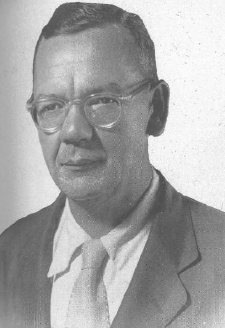 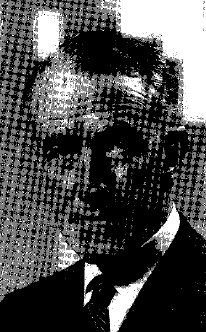
Photo from San Francisco Medical Society
Dr. Ian MacDonald (above left) and Dr.
Henry Garland (above right) wrote the
famous 1953 report of the California Medical Association that since
has become the basis of almost all scientific opposition to
Laetrile. It was learned later, however, that the findings in this
report had been falsified. Both doctors defended cigarette smoking
as a harmless Pastime unrelated to lung cancer.
Dr. MacDonald had
Publicly stated:
"A pack a day keeps lung cancer away."
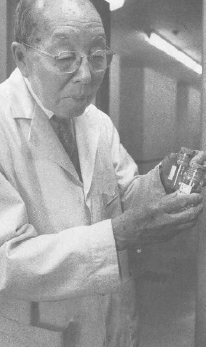 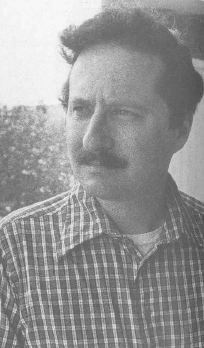
Dr. Kanematsu Sugiura (above left) was the senior laboratory researcher at
the Sloan-Kettering Cancer Institute.
He reported that, in his
experiments with mice, Laetrile was more effective in the control of
cancer than any substance he had ever tested. This was not
acceptable to his superiors. Instead of being pleased at the
possibility of a breakthrough, they brought in other researchers to
duplicate Sugiura's experiments and to prove that they were faulty.
Instead, the follow-up studies confirmed Sugiura. Undaunted, his
superiors called for new experiments over and over again, following
procedures designed to make the tests fail. Eventually they did
fail, and it was that failure that was announced to the world.
Ralph Moss (above right) was the Assistant Director of Public Affairs at
Sloan-Kettering at the time of the Laetrile tests. When he was
ordered by his superiors to release false information about the
results of those tests, he resigned in protest.
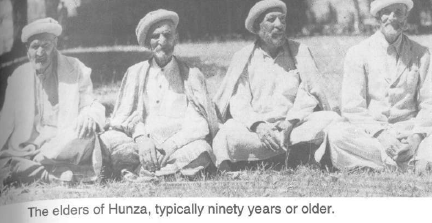
The Hunzakuts are world renowned for their amazing longevity and
good health. There is no cancer in Hunza.
The native diet contains
over two-hundred times more vitamin B17 than found in the average
diet of industrialized societies.
(Photos courtesy of Dr. J. Milton Hoffman.)
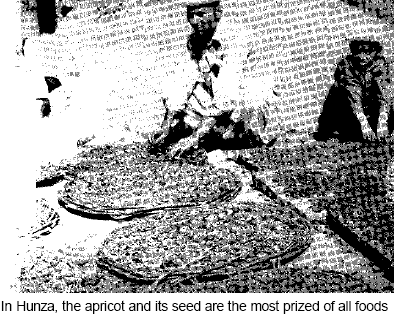
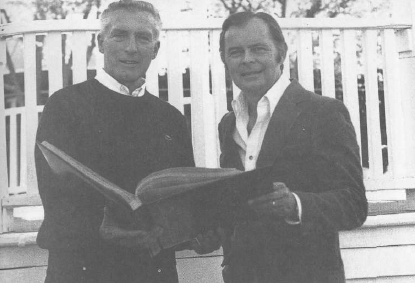
John A. Richardson,
M.D., (above right) shares his scrapbook of newspaper clippings with
the author. Dr. Richardson was in the forefront of the legal battle
for the right of a physician to administer Laetrile.
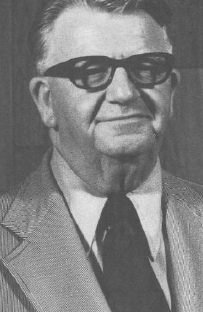 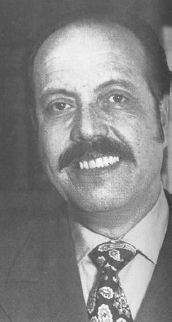
Dr. Ernst T. Krebs,
Jr. (above, left), the
biochemist who pioneered Laetrile and the vitamin
concept of cancer, likely will be acknowledged in
history as the Louis Pasteur of our day.
Dr. Ernesto Contreras (above, right), one of
Mexico's most distinguished medical figures,
established the world's first hospital specializing in
Laetrile as the treatment of choice for cancer.
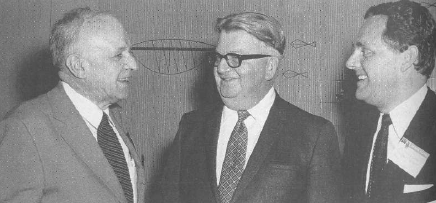
Shown at left are (above, from left to right) Dr.
Dean Burk, head of the Cytochemistry section of the National Cancer Institute, Dr.
Krebs,
and Dr. Hans Nieper, famous cancer specialist from Hanover, Germany.
Drs. Burk and Nieper are among the many prominent supporters of Dr.
Krebs and his work with Laetrile.
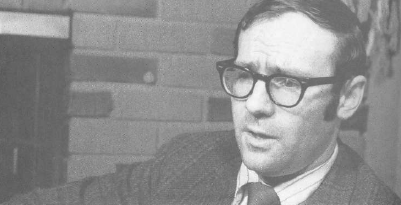
Dr. Dale Danner (above), a terminal cancer victim himself, at first
had no faith in Laetrile. On the brink of death he self-administered
a massive dose as a last resort and was amazed to experience a
release from pain and a return of appetite.
Three months later he
was able to return to work.
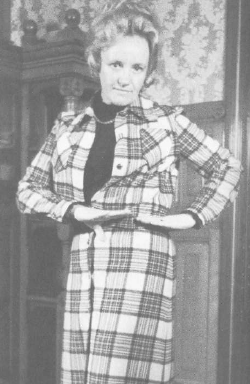
In 1967, cancer victim Joanne Wilkinson (above) was told that
it would be necessary to remove her leg, hip, bladder, and one of
her kidneys.
When she chose Laetrile instead, her irate physicians
warned her that she could not possibly live longer than twelve
weeks. This photo was taken many years afterward.
Mrs. Wilkinson has
enjoyed a healthy and productive life.
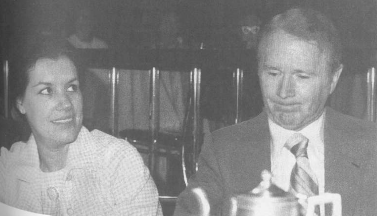
Alicia Buttons, wife of the famous actor-comedian Red
Buttons (above), had been given up as hopeless by
practitioners of orthodox medicine.
After a few months of
Laetrile therapy, however, her cancer had completely
disappeared. The couple is shown here at the 1973 Cancer
Control Convention in Los Angeles.
Alicia was still going
strong twenty-three years later.
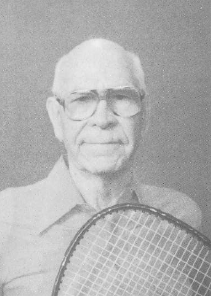
Bill Sykes (above) was given up as hopeless when he developed Stage-4 Lymphocytic Leukemia and cancerous tumors in his spleen and liver.
He was told that chemotherapy might prolong his life a few months
but no more. Instead, he turned to Laetrile and enzyme therapy.
That
was over 20 years ago.
Bill is now 74 and plays racquet ball twice a
week.
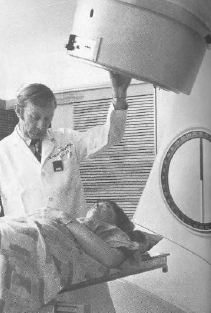
X-rays (above) are known to cause cancer, not to cure it.
The
patient often dies from X-ray damage rather than cancer. Those who
receive no treatment at all live just as long- or longer - than those
who undergo radiology or chemotherapy.
Orthodox cancer therapies
treat the symptom (the tumor) rather than the cause.
Back to
Contents
|














